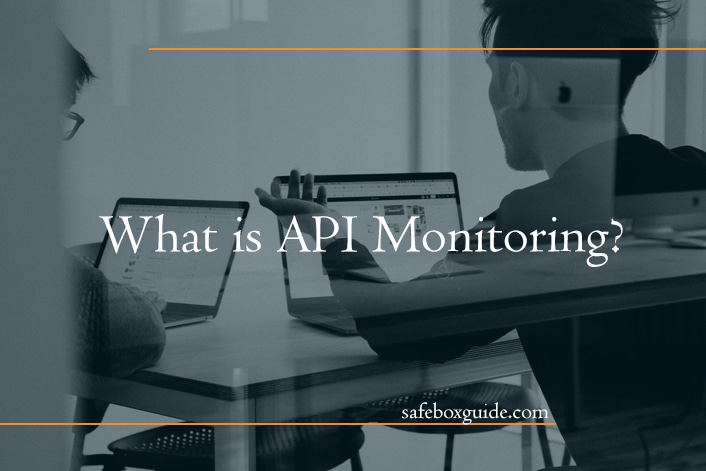APIs are the backbone of today’s digital infrastructure, giving developers access to powerful data and services. However, as with any other software, there is a need for continuous monitoring and performance optimization in order to ensure that your APIs are running smoothly and correctly. This guide will explore what API monitoring is and how it can help you maintain the high-level performance of your APIs. We’ll also discuss some of the best tools available for monitoring APIs and provide tips on how to choose the right one for your needs.
Contents
What is API Monitoring?

API monitoring is a type of active performance management that allows you to keep tabs on the health and performance of your APIs. By tracking key metrics, such as uptime, response time, and error rates, you can identify issues before they cause problems for your users. Additionally, API monitoring can help you track how your APIs are being used and identify potential security risks.
There are a number of different tools available for API monitoring, but not all of them are created equal. To help you choose the right tool for your needs, we’ve put together a list of the best API monitoring tools currently available.
The Different Types of API Monitors
There are a variety of API monitors available, each with its own advantages and disadvantages. The most popular types of API monitors are:
1. Ping monitors: These monitors simply make an HTTP request to the API endpoint and check for a successful response. They’re easy to set up and don’t require any special configuration, but they can’t provide detailed information about the API’s performance or functionality.
2. Transaction monitors: These monitors track the performance of specific API calls from end to end, including any external dependencies that are called during the process. They can provide detailed information about the response time and success rate of individual API calls, but they can be more difficult to set up and configure than ping monitors.
3. Synthetic transaction monitors: These monitors simulate real-world user interactions with the API in order to track its performance under load. They can provide detailed information about the response time and success rate of specific API calls, but they can be difficult to set up and configure correctly.
4. Log file monitoring: This type of monitor parses log files generated by the API in order to track its performance. It can be used to identify trends and problems, but it requires access to the server where the log files are stored, which may not be possible in all cases.
Pros and Cons of API Monitoring
API monitoring tools are essential for keeping track of the health and performance of your API. But with so many different options on the market, it can be tricky to know which one is right for you. In this article, we’ll take a look at the pros and cons of API monitoring, to help you make an informed decision about which tool is best for your needs.
PROS:
- API monitoring tools can help you detect problems with your API before they cause major issues.
- They can also help you troubleshoot errors, identify performance bottlenecks, and track changes to your API over time.
- Some API monitoring tools even offer features like real-time alerts and notifications, so you can respond to problems immediately.
CONS:
- API monitoring tools can be expensive, especially if you need to monitor multiple APIs.
- They can also be complex to set up and configure, which can require IT or developer support.
- And finally, some API monitoring tools may not offer all the features you need (or want), so it’s important to choose one that has the right mix of features for your needs.
What to Look for in an API Monitor
There are a few key things to look for in an API monitor. First, you want a tool that is easy to use and provides clear and actionable data. Second, you want a tool that integrates with your existing monitoring infrastructure. And third, you want a tool that is affordable and scales to meet your needs.
Here are a few specific things to look for in an API monitor:
- Ease of use: The best API monitors are easy to set up and use. They provide clear and actionable data that helps you quickly identify and fix problems.
- Integration: The best API monitors integrate with your existing monitoring infrastructure. This allows you to get the most out of your investment by leveraging existing tools and processes.
- Affordability: The best API monitors are affordable and scale to meet your needs. This ensures that you can get the most value out of your investment without breaking the bank.
The Best API Monitoring Tools

There are a number of API monitoring tools available on the market, each with its own set of features and benefits. In this section, we’ll take a look at some of the best API monitoring tools available, as well as what makes each one stand out.
One of the best API monitoring tools is Apiary. Apiary provides a complete suite of API management tools, including end-to-end testing, automated documentation, and performance monitoring. Apiary also offers a free plan for small teams, making it an ideal solution for startups or small businesses.
Another great option for API monitoring is Runscope. Runscope offers a comprehensive set of features for API monitoring, including request and response logging, uptime checking, webhook integrations, and more. Runscope also has a free plan for small teams, making it another great option for startups or small businesses.
If you’re looking for an open-source solution for API monitoring, then CheckMK might be the right tool for you. CheckMK is a leading open-source network and server monitoring tool that includes support for APIs. CheckMK offers a wide range of features for API monitoring, including request and response logging, uptime checking, webhook integrations, and more.
These are just a few of the many great options available when it comes to API monitoring tools. Be sure to do your research to find the right tool for your specific needs.
Alternatives to API Monitoring
There are a number of alternatives to API monitoring, each with its own advantages and disadvantages.
One alternative is to use a dedicated API management solution. These solutions typically provide a wide range of features, including monitoring, traffic management, and security. However, they can be expensive and may be overkill for small projects.
Another alternative is to use a logging solution such as Loggly or Splunk. These tools can be useful for monitoring API traffic, but they lack some of the more advanced features offered by dedicated API management solutions.
A third alternative is to roll your own solution using open-source tools such as Grafana and Prometheus. This option gives you full control over your monitoring setup, but it requires more technical expertise than using a ready-made solution.
Conclusion
API monitoring is an essential tool for any business that wants to ensure its APIs are functioning optimally. Using the right API-monitoring tools can help you identify errors faster and more accurately, as well as help you pinpoint potential weaknesses in your design. With a wide selection of available tools, there’s something to suit every organization’s needs. Hopefully, this guide has given you some insight into the best options for monitoring your APIs and will be useful when setting up a new system or improving on an existing one.

